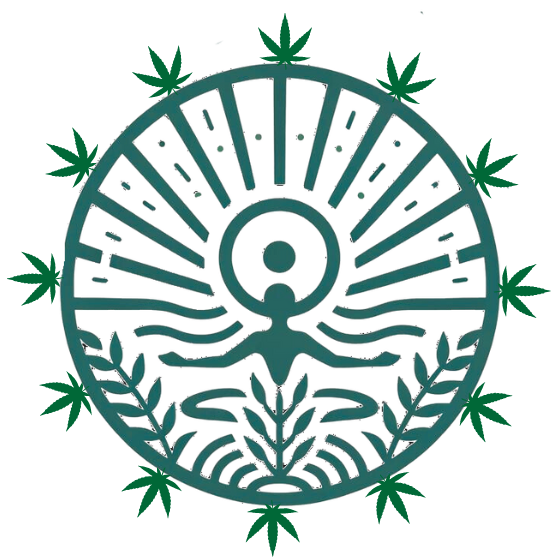Psychedelics, a class of drugs known for altering perceptions and emotions, have journeyed from ancient spiritual ceremonies to the forefront of modern psychiatric research.
While people often associate these substances with their recreational use, a deeper dive reveals a complex world of compounds with varying effects, uses, and potential benefits.
From the well-known psilocybin mushrooms to the profound depths of DMT experiences, this guide unpacks the diverse types of psychedelics, their unique properties, and how they’re reshaping our understanding of mental health treatment.
Let’s explore this fascinating realm where science and spirituality converge.
How do psychedelics work?
Psychedelics exert their effects by acting on the brain’s serotonin receptors.
Particularly, they work on the 5-HT2A receptor, which plays a crucial role in regulating mood, cognition, and perception.
This interaction prompts a significant increase in neural connectivity and brain activity patterns, leading to profound changes in consciousness.
These changes can manifest as altered perceptions, thoughts, and emotions, offering insights into the workings of the human mind.
Additionally, research suggests that psychedelics may facilitate neuroplasticity, potentially aiding in the treatment of mental health disorders by disrupting negative thought patterns and behaviors.
Common types of psychedelics
1) Psilocybin mushrooms
When it comes to types of psychedelics, Psilocybin mushrooms, often referred to as ‘magic mushrooms’, are one of the most commonly known.
What is truly fascinating about these mushrooms is their long history of use in spiritual and healing rituals.
Psilocybin, the active ingredient, is a naturally occurring psychedelic compound. When ingested, it produces alterations in perception, mood, and cognitive processes.
But it’s not just about the ‘trip’.
Recent scientific research has started to unveil its potential therapeutic benefits. In fact, studies suggest psilocybin can be effectively used in the treatment of depression, anxiety, and addiction.
In essence, Psilocybin Mushrooms offer a unique blend of profound psychedelic experiences and potential healing properties.
This makes them not only an intriguing substance for those seeking spiritual growth but also a promising tool in the field of mental health.
2) Lysergic Acid Diethylamide (LSD)
Another prominent player in the psychedelic realm is Lysergic Acid Diethylamide, better known as LSD or ‘Acid’.
What piques my interest with LSD is its powerful impact on the mind’s perception. This synthetic compound can dramatically alter one’s thoughts, mood, and sensory perception.
But what’s more?
LSD has shown potential in psychotherapy.
It’s been used in experimental therapy to treat various conditions like depression, anxiety, and even post-traumatic stress disorder.
Generally, the effects of LSD can last up to 12 hours, making it one of the longest-lasting psychedelics. This long duration can lead to profoundly transformative experiences.
3) Ayahuasca
Now, let’s take a turn towards something more traditional – Ayahuasca.
A brew made from the Banisteriopsis caapi vine and other ingredients, this psychedelic has been used for centuries in spiritual ceremonies by indigenous tribes in the Amazon.
What’s unexpected about Ayahuasca?
While many psychedelics are known for their visual effects, Ayahuasca is famed for its introspective insights. Yes, it can make you see vibrant patterns, but more so, it can make you dive deep into your psyche.
You might find yourself confronting past traumas or gaining new perspectives on personal issues. This makes Ayahuasca a potent tool for self-discovery and healing.
However, an Ayahuasca journey isn’t a light experience.
It often comes with physical discomforts like nausea and vomiting. Nonetheless, many users claim that the insights gained outweigh any physical discomforts.

4) Dimethyltryptamine (DMT)
Have you ever wanted to experience an entirely different reality, even if just for a few minutes?
Well, that’s exactly what DMT does.
Dimethyltryptamine, or DMT, is a naturally occurring compound that can induce one of the most intense psychedelic experiences.
This psychedelic substance stands out with the speed and intensity of the experience it provides.
Often referred to as a “businessman’s trip”, a DMT journey typically lasts only 15-30 minutes but is described as incredibly profound.
Interestingly, DMT can be found in various plants and even in the human brain. Its role in nature and in our bodies remains a mystery, adding to its allure.
5) Mescaline
Shifting our focus to a naturally occurring psychedelic, let’s discuss Mescaline.
Found in various types of cacti, such as the Peyote and San Pedro, Mescaline holds a special place in the psychedelic arena.
From my perspective, the allure of Mescaline lies in its ability to trigger deeply introspective experiences intertwined with vivid hallucinations.
Here are a few key aspects that make Mescaline stand out:
- Long-lasting effects: A typical Mescaline trip can last up to 12 hours.
- Spiritual insights: Many users report profound spiritual and introspective experiences.
- Vivid visual effects: Mescaline is known for inducing colorful and intricate visual hallucinations.
Mescaline has been used for centuries in Native American ceremonies and continues to be valued for its potential to foster deep spiritual growth.
Although it’s not as commonly used as LSD or psilocybin, it holds its own unique spot in the wide spectrum of psychedelics.
6) Salvia divinorum
If we’re discussing types of psychedelics, it would be incomplete without mentioning Salvia divinorum. This plant-based psychedelic is native to the cloud forests of Oaxaca, Mexico.
Salvia Divinorum, or simply Salvia, stands out due to its unique effects.
The ‘trip’ induced by Salvia is often described as more of a ‘journey into another dimension’ rather than the colorful visuals associated with other psychedelics.
The effects of Salvia are rapid and intense but short-lived, typically lasting only a few minutes.
This swift and profound experience can leave users with a sense of having traveled far away or even having lived an entirely different life.
While it’s not for everyone, for those seeking a brief yet deeply transformative experience, Salvia divinorum offers an intriguing option in the world of psychedelics.
7) Ibogaine
Finally, Ibogaine is one of those substances that truly underscores the potential of psychedelics beyond recreational use.
Extracted from the West African shrub, Tabernanthe Iboga, Ibogaine is unique in its therapeutic applications.
The most striking aspect of Ibogaine is its use in treating addiction.
Today, there are numerous anecdotal reports and some research studies suggesting that a single dose of Ibogaine can significantly reduce withdrawal symptoms and cravings in individuals addicted to opioids, alcohol, and other substances.
Thus, it’s a powerful experience, often involving introspective insights that help users confront the root causes of their addiction.
This remarkable potential places Ibogaine at the forefront of psychedelic-assisted therapies, highlighting the transformative power these substances can have when used responsibly and with intention.
Psychedelics through the ages
The history of psychedelics stretches back to ancient times, when they were integral to spiritual and religious ceremonies across various cultures.
These substances were revered for their ability to induce profound states of consciousness, connecting individuals with the divine or the deeper aspects of the self.
In the mid-20th century, psychedelics crossed into the realm of psychotherapy, promising new avenues for treating mental health disorders. However, political pressures in the 1960s led to strict regulations, pushing these substances into the shadows.
Despite this, the last few decades have seen a resurgence of interest within the scientific and medical communities.
Researchers are now keenly exploring psychedelics’ potential for treating conditions such as PTSD, anxiety, and depression, fueled by modern studies and trials.
This revival marks a full circle in the understanding and appreciation of psychedelics, from ancient rituals to potential modern-day medical breakthroughs.
Future of psychedelics
In conclusion, as we stand on the cusp of potentially groundbreaking advancements in mental health treatment, the call to action is clear:
Support continued research into psychedelics with an open mind and a critical eye.
The FDA’s recent openness to psychedelic studies heralds a significant shift, potentially paving the way for their integration into mainstream psychiatry.
As clinical trials continue to demonstrate their efficacy in treating a range of mental health disorders, we may soon see psychedelics prescribed alongside traditional therapies.
So, here’s the thing:
The journey from ancient rituals to modern medicine is far from over, but each step forward offers a glimpse into a future where mental health treatment transcends current limitations.











